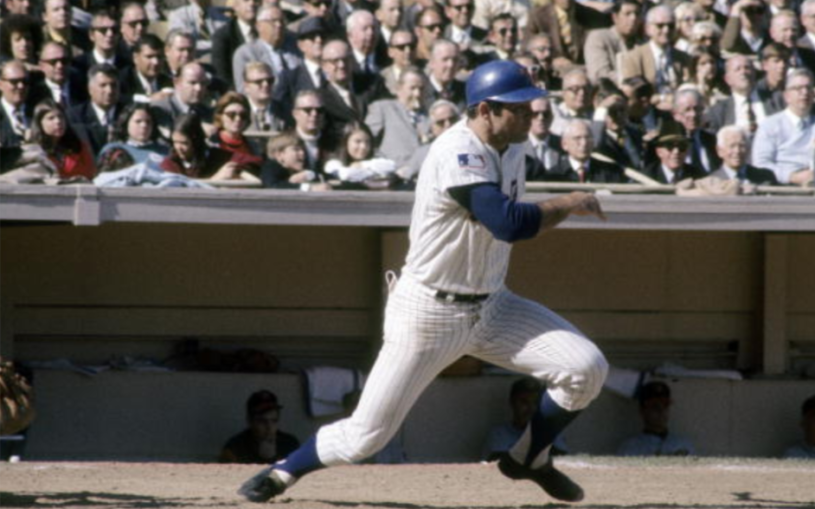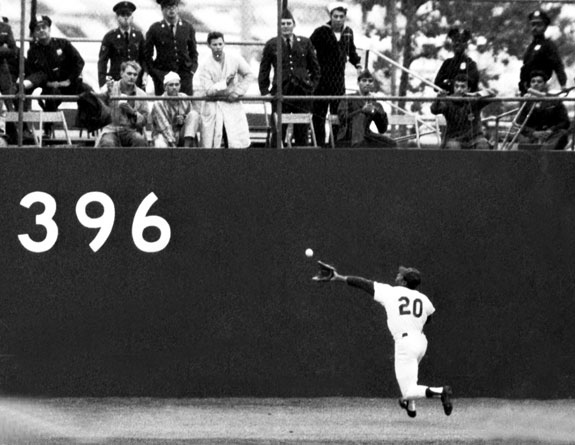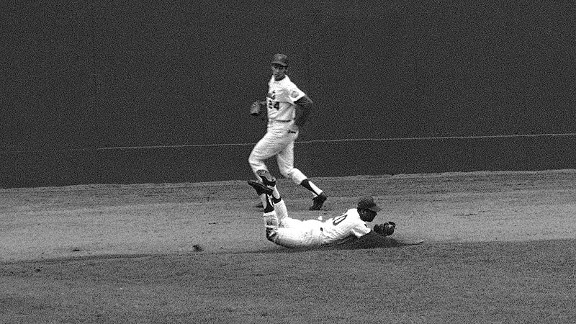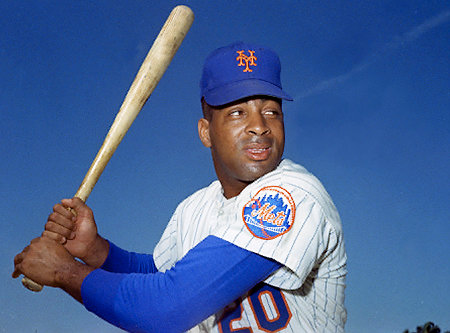
When we look back at critical plays at crucial moments throughout World Series history, many of them are related to six or seven game series. A bloop hit by Luis Gonzalez, a ground ball that ‘gets by Buckner,’ a missed third strike by Mickey Owen. It’s hard to imagine that one player could have such an impact in a short five-game series.
But that is exactly what Tommie Agee meant to the Mets in 1969. It’s very conceivable that had it not been for Agee, we would have just one championship.
Tom Lee Agee was born on August 9, 1942, in Magnolia, AL. He was a college star at Grambling and ultimately was signed by the Cleveland Indians. Although his first big league at-bat happened on Sept 14, 1962, he saw very little playing time. It was not until 1966 when Agee became a full-time player for the White Sox. He thrived in his everyday role. In his first full season, he hit 22 Home Runs, knocked in 86 RBI’s, slugged at 447, scored 98 runs and also stole 44 bases on his way to winning the AL Rookie of the Year.
The following year, however, his productivity dropped substantially. He hit just 234, 14 HR’s and struck out 129 times. The Sox wasted no time in casting off this ‘one year wonder’ and sent him to the Mets along with Al Weis for Jack Fisher, Tommy Davis, and two rookies.
The 1968 season started with hope for the Mets. We now had two former Rookie of the Year winners in Agee and Tom Seaver. A young pitcher named Koosman was also showing promise. We had a new manager in the much revered Gil Hodges. On Opening Day, the Mets jumped out to an early 4-0 lead against future Hall of Famer Juan Marichal.
However, our bullpen failed. The Giants scored three in the bottom of the ninth and it became clear from that day that 1968 would be no different. Agee had been beaned in Spring Training by Bob Gibson and never got on track. He started the season going 0-34. And things didn’t improve much. In 132 games, he hit only 217, five home runs and an embarrassing 17 RBI.

When the ’69 season began, Mets fans, as we always do, hoped for the best but somewhat expected the worst. Gil Hodges saw something in his center fielder. Although Agee didn’t have the natural talent of a Seaver or Nolan Ryan, he worked hard and made the most of his skills. Teammates always described #20 as “Intelligent,” “Hard-working” and “A real winner.” Despite having a pitiful 68 season, Hodges stood by his center fielder. The fans never booed. And Agee quickly rewarded his manager, his teammates, and the Mets faithful.
On April 10, 1969, Tommie Agee put the NL on notice that he was back! He blasted a home run that would reach the upper deck at Shea. (Insert music from The Natural.) Only 8608 fans were on hand that day. The game was not televised so there is no footage. On-deck hitter Rod Gaspar said, “I’ve never seen a ball hit like that.” Buddy Harrelson stated, “The ball was still climbing.”
Although Shea was only six-years-old at the time, people assumed that eventually, someone would again hit a ball again that far. It never happened. And that blast by Agee became the longest HR ever hit at Shea. Agee led the 69 Mets in HR’s, RBI’s and RS. He also won Comeback Player of the Year.
The Miracle of the ’69 season, however, quickly came into doubt in the Fall Classic. Tom Seaver, with a record of 25-7 and a 2.21 ERA started Game One. Don Buford welcomed the Mets into the World Series by hitting a lead-off home run. The Mets were shell-shocked and people wondered if reality would now set in. Was the Amazin’ season coming to an end? The Miracle was in doubt. However, behind the masterful pitching of Jerry Koosman in Game 2, the Mets prevailed 2-1, split the two games in Baltimore, and now returned home.
56,335 fans attended Game 3, the first World Series game ever played at Shea. It was Agee who stepped to the forefront. Leading off against future Hall of Famer Jim Palmer, Agee opened the game with a home run and put the Mets on top. However, the best was yet to come.
The Mets led 3-0 in the top of the fourth. With runners on first and third with two outs, Elrod Hendricks hit a shot deep into left-center field. Agee ran as fast as his legs would carry him. Approaching the wall at full speed, Agee did not slow down. With no concern for injury, he went after the line drive.
As he said years later, “I would have run right through that wall if I needed to.” Agee made a backhanded snow coned catch and saved at least two runs. As he trotted off the field, with the white of the ball still in the webbing, Shea erupted like never before. But he was not done yet.
In the seventh, the Mets were leading 4-0 but Baltimore, winner of 109 games during the season, showed why they were the class of the AL. They refused to roll over. They loaded the bases. Paul Blair, the tying run, stepped to the plate and Hodges brought in Nolan Ryan from the bullpen. Blair greeted Ryan by hitting one deep into right–center field. Once again, Agee sped into the power alley.

The possibility of him making TWO great catches seemed impossible, unlikely. At the last minute, the wind grabbed hold of the ball. Agee extended, dove for the ball, snared the sinking liner, slid onto the warning track and rolled over. The ball was in his glove. Had he not made the catch, it most likely would have been an inside-the-park HR and tied the game at 4.
The Mets won the game, 5-0, and would go on to win the Series in five. “The Homer meant one run,” Agee said, “But the catches saved more than that.” Agee’s catches also signified the dawning of a new age for the Mets. We would no longer be the laughing stock. The lovable losers were on their way to becoming Champions.
Sports Illustrated ranked Agee’s catches as the best in Series history along with Willie Mays in 1954, Sandy Amoros in 1955 and Al Gionfriddo in 1947. They also went on to claim that Agee’s performance in Game 3 was the best ever by a CFer in World Series history.
The point can be argued that if it was not for Tommie Agee in Game 3, the Orioles may have quite possibly won the game, salvaged at least one of the three in New York and forced the series to return to Baltimore. And who knows what would have happened. Thanks to Tommie Agee, none of that was necessary.
Although 69 was his high point, Tommie continued to be a major part of the Mets the following season. During 1970 he put together a 20 game hitting streak, hit for the cycle one day in July and even stole home in the 10th inning to win a game. Mets management was so pleased with his performance, they increased his salary to $40,000.
However, by 1974, he was out of baseball. Injuries cut short his career. After hitting just 227 and 13 HR’s in 1972, the Mets traded him to Houston for Rich Chiles and Buddy Harris. He played for Houston and St. Louis in 1973 and then was traded to Los Angeles but failed to make the team out of spring training and at age 30, Tommie Agee retired.
He went on to open ‘The Outfielder’s Lounge’ close to Shea and ultimately worked for Stewart Title Insurance. He remained very active in promoting the Mets around the city and spent his later years taking part in numerous charities and baseball clinics. “He was such a good athlete and a really good friend,” teammate Kenny Boswell said after Agee passed away. Right fielder and fellow champion Ron Swoboda said, “The way he conducted himself on and off the field, both during and after his career, was admirable. He was taken way too soon.”
















